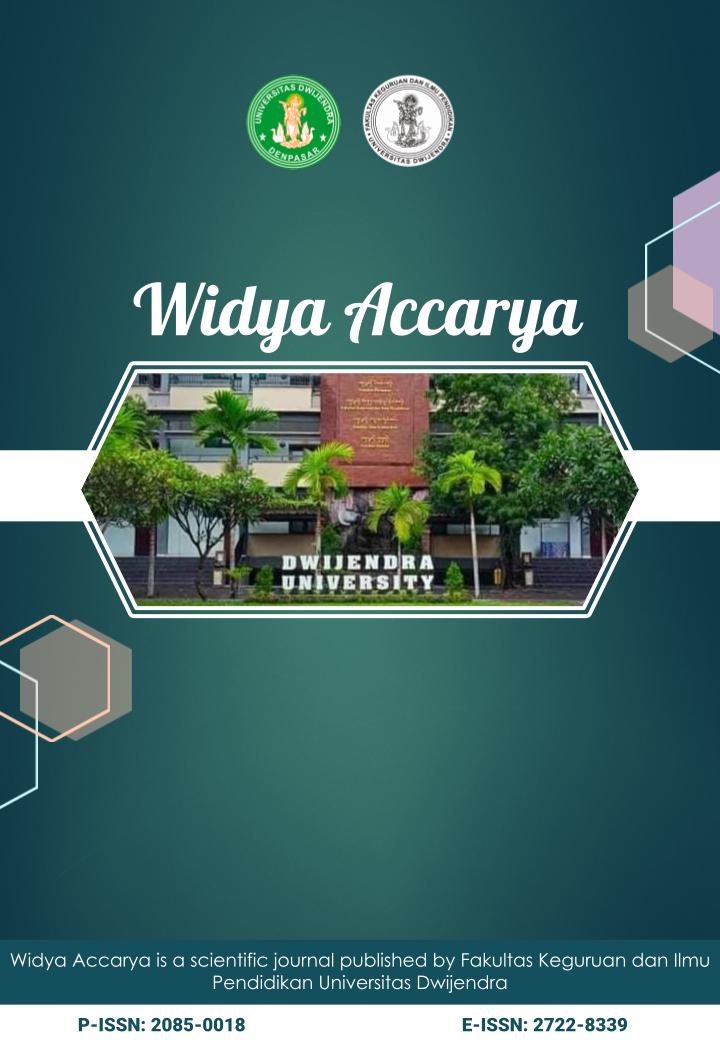Analyzing Students’ Reading Needs through Dayak Cultural Content in East Kalimantan
DOI:
https://doi.org/10.46650/wa.16.2.1725.204-215Keywords:
Dayak culture, English reading materials, local culture, mixed-method research, reading comprehensionAbstract
References
Aminullah, F., Sada, C., & Sudarsono, S. (2019). Local Culture-Based Reading Materials for EFL Context. Proceedings International Conference on Teaching and Education (ICoTE), 2(2), 193. https://doi.org/10.26418/icote.v2i2.38227
Darong, H. C. (2022). Local-Culture-Based Materials in Online Cooperative Learning: Improving Reading Achievement in Indonesian Context. Journal of Innovation in Educational and Cultural Research, 3(3), 361–372. https://doi.org/10.46843/jiecr.v3i3.113
Fatmawaty, R., Faridah, F., Aquariza, N. R., & Nurahmada, A. (2022). Folklore as Local Culture-Based Material for Improving Students’ Reading Comprehension of Narrative Text. Jo-ELT (Journal of English Language Teaching) Fakultas Pendidikan Bahasa & Seni Prodi Pendidikan Bahasa Inggris IKIP, 9(2), 205. https://doi.org/10.33394/jo-elt.v9i2.6338
Marhamah. (2024). Navigating Content and Language Integrated Learning ( CLIL ) in Indonesian Universities : Promise and Pitfalls. TOFEDU: The Future of Education Journal, 3(5), 2202–2211.
Norhasanah, & Setiawan, R. (2023). Content and Language Integrated Learning (CLIL) Implementation for Indonesian EFL Learners: A Case Study. SAGA: Journal of English Language Teaching and Applied Linguistics, 4(2), 89–100. https://doi.org/10.21460/saga.2023.42.165
Saini, F., Halimah, N., & Basala, A. H. (2021). Teaching Reading Comprehension Strategies In Descriptive Text. Journal of English Language Teaching, Linguistics, and Literature Studies, 1(2), 118–132. https://doi.org/10.30984/jeltis.v1i2.1671
Saputra, D. G., & Haddar, G. Al. (2024). Enhancing Reading Comprehension in Education: A Study on the Effectiveness of the SQ3R Method. Jurnal Ilmu Pendidikan Dan Humaniora, 13(03), 167–179. https://journals.ristek.or.id/index.php/jiph/index
Soplantila, E. (2024). The Role of Local Folklores in Students ’ Reading Comprehension. 2(2), 185–198. https://doi.org/10.30598/matail.v4i2.13717
Downloads
Published
How to Cite
Issue
Section
Citation Check
License
Copyright (c) 2025 Royanti, Yustina Fitriani

This work is licensed under a Creative Commons Attribution-ShareAlike 4.0 International License.
An author who publishes in the Widya Accarya agrees to the following terms:
- Author retains the copyright and grants the journal the right of first publication of the work simultaneously licensed under the Creative Commons Attribution-ShareAlike 4.0 License that allows others to share the work with an acknowledgement of the work's authorship and initial publication in this journal
- Author is able to enter into separate, additional contractual arrangements for the non-exclusive distribution of the journal's published version of the work (e.g., post it to an institutional repository or publish it in a book) with the acknowledgement of its initial publication in this journal.
- Author is permitted and encouraged to post his/her work online (e.g., in institutional repositories or on their website) prior to and during the submission process, as it can lead to productive exchanges, as well as earlier and greater citation of the published work (See The Effect of Open Access).
Read more about the Creative Commons Attribution-ShareAlike 4.0 Licence here: https://creativecommons.org/licenses/by-sa/4.0/.

















